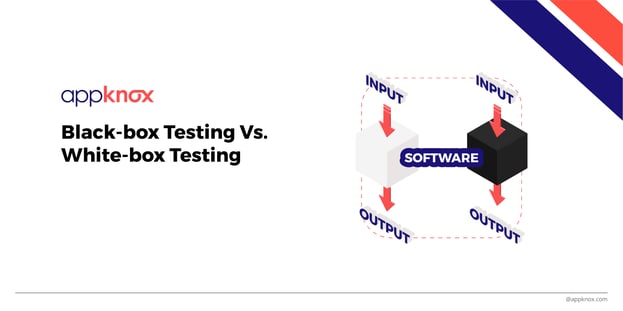
BLOG

BLOG
A developer goes through further development and deployment rules for creating applications. Testing is an essential step in the development cycle.
When it comes to software testing, many techniques need to be used from time to time. Yet the confusion around white, grey, and black testing techniques are most common among all software testing techniques.
They often appear similar, yet the differences between them are very jarring. And this article will shed light difference between black box testing and white box testing from each other.
In Black box testing, the tester does not know the software or the working systems. It's a kind of testing that focuses more on the behavior than the infrastructure of the software.
Besides, the testing is more to do with the end-user or works on the outer scale. Black box testing is used on different levels like - integration, unit, system, and acceptability.
The source of black box testing depends on the requirements stated by the customer. The process examines the functionality of the software without any coding.
Plus, it does not require any Programming language knowledge know-how. All the tests are designed considering the output and input functions. The process analyzes the test against the needs, identifies the bugs or defects, and sends it back to the development team for rectification.
It involves a process where the tester gives an input value to check functionality and checks whether functions are giving output. Additionally, the testing method is less time-consuming than White box testing.
The main objective here is to work depending on the specifications of users. Simply put, it checks application functionality depending on customers' needs.
It assesses whether the set of values is acceptable for a software system for both valid and invalid input parameters. Besides, it helps cut down the number of test cases, and it's ideal for systems that work on definite ranges.
In decision table testing, the matrix contains the causes and consequences of the issue. And each column has a different combination.
The testing reduces the number of test cases to a minimum while maintaining the test coverage.
The White box tests the internal infra of the system and denotes the ability to see through the software's outer shell. Developers perform the White box testing, and the results are sent to the testing team for verification.
Once the process of the white box test is over, testers perform the Black box testing. The main reason for White box testing is to test the application's internal system.
It is done on the lower levels, including integration and unit testing. Additionally, it requires programming knowledge as it focuses on the code structure, conditions, and different software branches.
Besides, the main goal of white box testing is to focus on the flow of inputs and outputs. Also, it helps to strengthen the security of the software.
White box testing focuses more on the underlying structure and validates the workflow. Most developers also call White box testing - Clear box testing OR Transparent box testing.
As the codes are visible to the testers, the process becomes easier and saves time. Also, it is suitable for algorithm testing.
Statement coverage in White box testing helps you check whether each line in the coding process runs at least once.
Branch coverage is performed only once, but this test determines coverage and the control flow graph results.
Path coverage examines all the program pathways that make the job easier for the development team.
Automated test cases can become useless if the codes keep changing. However, code implementation is vital for White box testing, and proper knowledge is required. White box testing is implemented after the detailed design document.
It isn't easy to achieve 100% testing, but you can always raise the percentage with successful white box and black box testing. Also, automation is not easy in Black box testing as the tester and programmers depend on each other.
On the other hand, it is easier for the development team to automate white box testing. And so, the key lies in understanding both testing techniques in their differences. To make software delivery impeccable, white box and black box testing is an important step that should be done thoroughly. You can hire dedicated developers in India to perform testing successfully besides developing your software and also you can secure your mobile application security with Appknox's security researchers.
